
As a leading grower and lover of coffee, Indonesians are blessed with varieties of unique and tasty coffees. From this eastern-most point of the Old World, Indonesian coffees spread out to the Arab World, to the Americas, to Western Europe, and beyond.
The specialty coffee industry was created on the basis of uniqueness. It begins with the variety and growing location of the tree, and proceeds through the manner of its harvesting, how the bean is roasted and the skill with which it is brewed. The Specialty Coffee industry comprises those people and businesses that have dedicated their lives to quality coffee.
Generally, Indonesia’s specialty coffee has a full body and relatively low acidity. Each region is known for a typical cupping profile, although there is a great deal of diversity within the regions. The Specialty Coffee Association of Indonesia lists these following traits:
· Sumatra – intense flavor, with cocoa, earth and tobacco notes
· Java – good, heavy body, with a lasting finish and herbaceous notes
· Bali – sweater than other Indonesian coffees, with nut and citrus notes
· Sulawesi – good sweetness and body, with warm spices notes
· Flores – heavy body, sweetness, chocolate and tobacco notes
· Papua – heavy body, chocolate, earth and spicy finish
SUMATRA
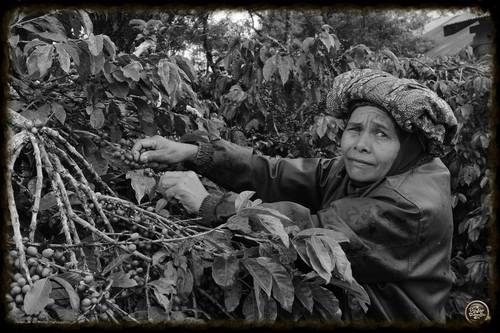
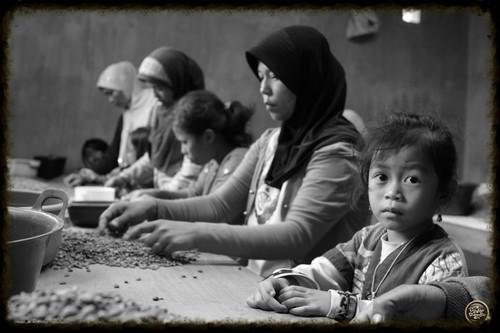
Mandheling Coffee
Sumatra Mandheling coffee is one of the common four types of Sumatra Arabica coffee. While most coffee is named after the growing region, or the country, Mandheling coffee is named after the Mandailing people that traditionally farmed and processed the coffee beans in the Tapanuli region. Later, the word spread to Japan, and then the name stuck as merchants began inquiring about the purchase of Mandheling coffee from Sumatra/
Coffee trees were brought to the island in the early 19th century in an attempt to break the near monopoly on coffee beans from other parts of the world. Mandheling coffee is grown in altitudes of 2,500 to 5,000 feet.
Gayo Coffee
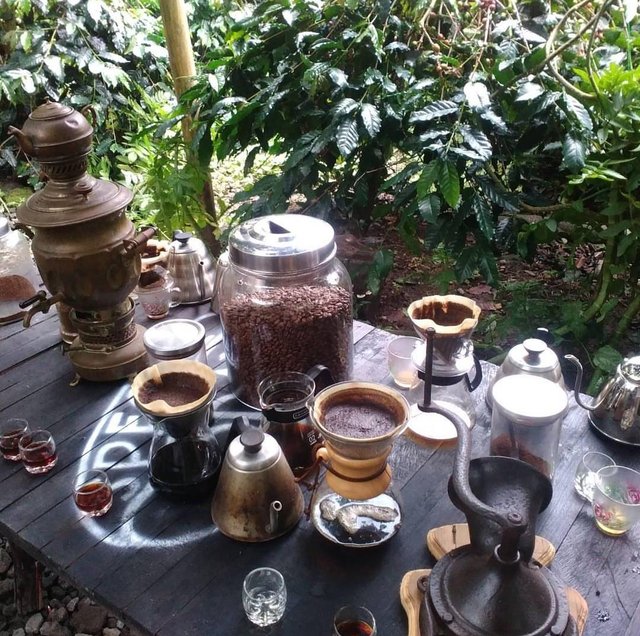
This special coffee comes from the Gayo highlands in Central Aceh, near Lake Laut Tawar, which is surrounded by thousands of hectares of vegetation, mostly coffee and pine. The area is part of the Bukit Barisan mountain range, which stretches across the island of Sumatra. Small holding coffee plantations in the Lues, totaling 94,500 hectares. Almost 80 percent of coffee growers in Central Aceh maintains organic plantations.
Gayo coffee’s entry to the world commodity market is due to its highly valued, typical flavor. Its fine aroma and lack of bitter taste have become the characteristics of this Gayo Arabica product. The Gayo Coffee Research Agency, said Gayo Arabica coffee cannot be obtained from anywhere else because of the estates’ 1,200 meter altitude also pay a contributory role as both are ideal for growing coffee. The best and most widely planted varieties are Gayo 1 and Gayo 2.
The exceptional taste of Gayo coffee has made it a favorite among coffee drinkers in Europe, especially in the Netherlands. Gayo coffee belongs to the premium category, in equal class to other world-famous coffee.
Lintong Coffee
Lintong coffee is grown in the District of Lintongnihuta, to the south-west Lake Toba. This large lake is one of the deepest in the world, at 505 meters. The coffee production area is a high plateu, known for its diversity of tree fern species. This area produces 15,000 to 18,000 tons of Arabica per year. A neighboring region, called Sidikalang, also produces Arabica coffee.
Unlike many of Indonesia’s islands, Sulawesi is geologically ancient, dating back more than 100 million years. The long history has resulted in soils with a high iron content – thought to affect coffee flavor.
JAVA
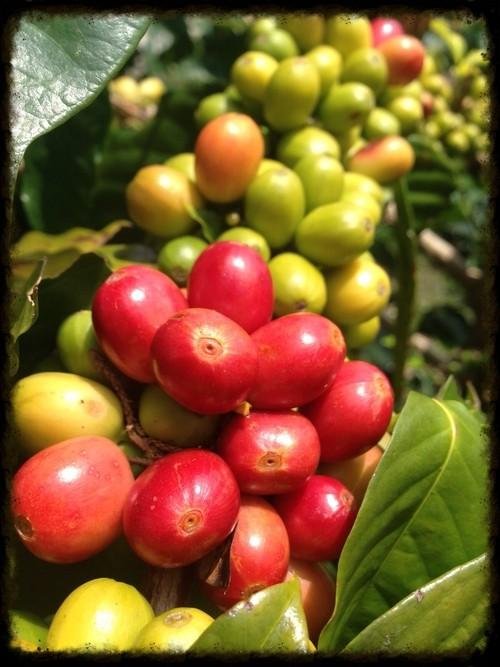
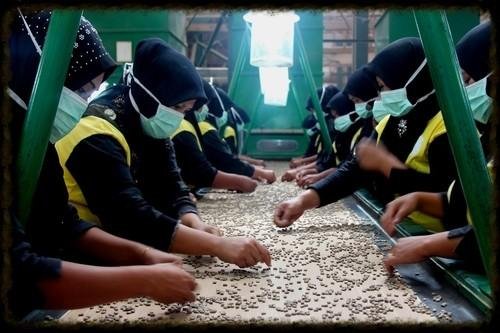
West Java is the earliest plantation area acquired by VOC in East Indies back in 18th century. Coffee was planted in Priangan area, such as in Sumedang. Java’s Arabica coffee production is centered on the Ijen Plateau, at the eastern end of Java, at an altitude more than 1,400 meters. The coffee is primarily grown on large estates that were built by the Dutch in the 18th century. The five largest estates are Blawan (also spelled Belawan or Blauan), Jampit (or Djampit), Pancoer (or Pancur), Kayumas and Tugosari, and they cover more than 4,000 hectares.
These estates transport ripe cherries quickly to their mills after harvest. The pulp is then fermented and washed off, using the wet process, with rigorous quality control. This results in coffee with good, heavy body and a sweet overall impression. They are sometimes rustic in their flavor profiles, but display a lasting finish. At their best, they are smooth and supple and sometimes have a subtle herbaceous note in aftertaste.
This coffee is prized as one component in the traditional “Mocca Java” blend, which pairs coffee from Yemen and Java. Certain estates age a portion of their coffee for up to five years, normally in large burlap sacks, which are regularly aired, dusted and flipped. As they age, the beans turn from green to light brown, and their flavors gains strength while losing acidity. Aged coffees can display flavors ranging from cedar to spices such as cinnamon or clove, and often develop a thick, almost syrupy body. These aged coffees called Old Government, Old Brown or Old Java.
SULAWESI
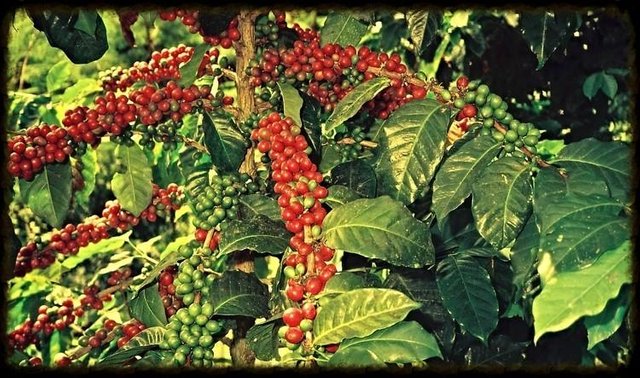
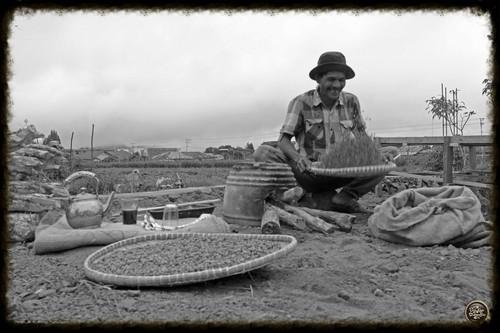
In South Sulawesi province, the primary region for high altitude Arabica production is in mountainous area called Tana Toraja, at the central highlands of province. To the south of Toraja is the region of Enrekang. The capital of this region is Kalosi, which is well-known brand of specialty coffe. The regions of Mamasa (to the west of Toraja) and Gowa (to the south of Kalosi), also produce Arabica, although they are less well known.
Sulawesi coffees are clean and sound in the cup. They generally display nutty of warm spices notes, like cinnamon or cardamom. Hints of black pepper are sometimes found. Their sweetness, as with most Indonesian coffees, is closely related to the body of the coffee. The after taste coats the palate on the finish and is smooth and soft,
Most of Sulawesi’s coffee is grown by small-holders, with about 5% coming from seven larger estates. The people of Tana Toraja build distinctively shaped houses and maintain ancient and complex rituals related to death and afterlife. This respect for tradition is also found in way that small-holders process their coffee Sulawesi farmers use a unique process called “Giling Basah” (wet hulling).
The name Java is almost synonymous with quality coffee. It is the site of the first coffee plantation, a century-old coffee research institute, and one of a few places where the Coffeea arabica, C. canephor and C.
BALI
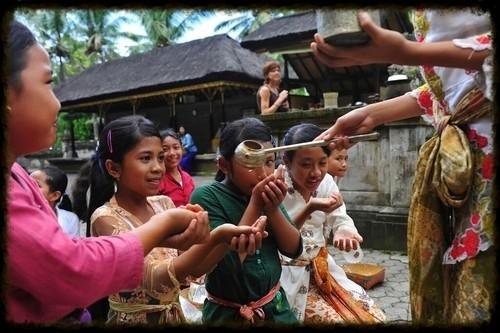
The highland plateau of Kintamani, between the volcanoes of Batukaru and Agung, is the main coffee growing area. Generally, Balinese coffee is carefully processed under tight control, using the wet method. This results in a sweet, soft coffee with good consistency. Typically flavors include lemon and other citrus notes.
FLORES
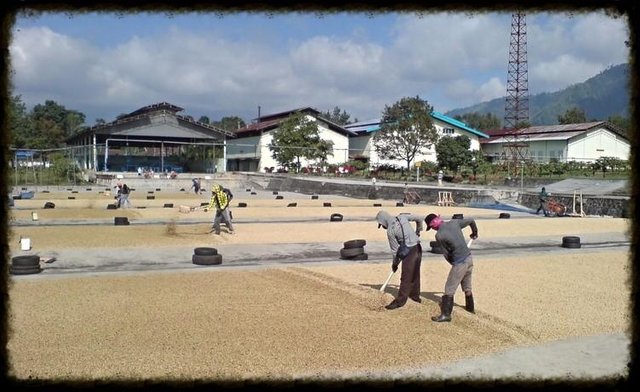
Flores Island is 360 miles long, and is located 200 miles to the east of Bali. The terrain of Flores is rugged, with numerous active and inactive volcanoes. Ashes from these volcanoes have created especially fertile andosols, ideal for organic coffee production. Arabica Coffee is grown at 1,200 to 1,800 meters on hillsides and plateaus. Most of the production is grown under shade trees and wet processed at farm level. Coffee from Flores is known for sweet chocolate, floral and woody flavor.
Photo Credit: Aroma of Heaven
PAPUA
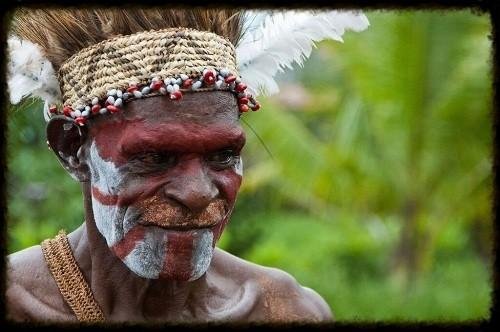
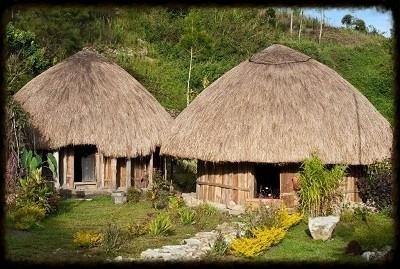
There are two main coffee growing areas in Papua. The first is the Baliem Valley, in the central highlands of the Jayawijaya region, surrounding the town of Wamena. The second is the Kamu Valley in the Nabire Region, at the eastern edge of the central highland, surrounding the town of Moanemani. Both areas lie at altitudes between 1,400 and 2,000 meters, creating ideal conditions for Arabica production.
Together, these areas currently produce about 230 tons of coffee per year. All coffee is shade grown under Calliandra, Erithrina and Albizia trees. Farmers in Papua use wet hulled processs. Chemical fertilizer pesticide and herbicide are unknown in this origin, which makes this coffee both rare and valuable.
Ever since its initial introduction, Indonesians have been attached to coffee. Drinking coffee has become a tradition and part of everyday life of Indonesian people that cannot be skipped.
Reference :
Commercial Attache at the Embassy of Indonesia to the United States // 2020 Massachusetts Avenue, NW. Washington, DC 20036 // Phone: (202)775-5200 (ext 254) // [email protected]
BACK TO TOP
Copyright: Remarkable Indonesian Coffee 2017 / Powered by Squarespace
Hi! I am a robot. I just upvoted you! I found similar content that readers might be interested in:
http://www.remarkableindonesiancoffee.com/from-east-to-west/
Downvoting a post can decrease pending rewards and make it less visible. Common reasons:
Submit